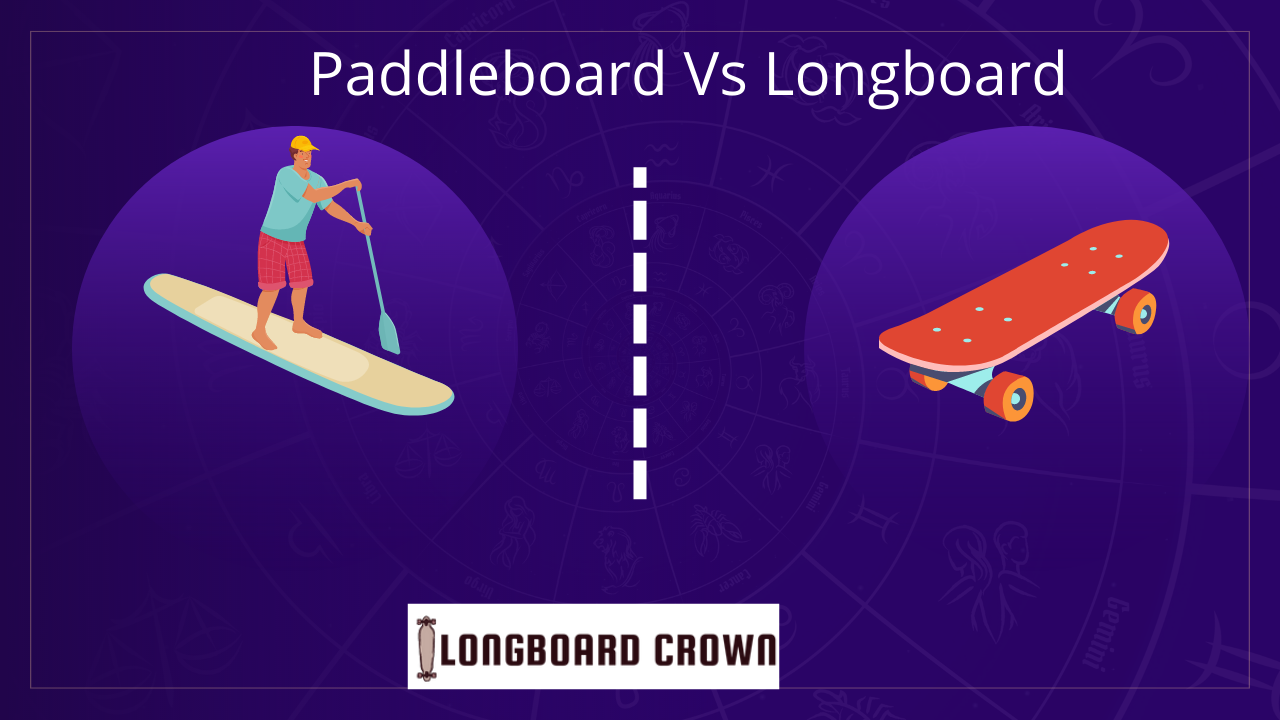For beginners, it is difficult to differentiate between a paddleboard and a longboard/surfboard. When they see the paddle boarders are surfing using a surfboard, they get a little confused if there is any difference between the two types of board.
And actually, they are right to some extent, as both boards share many similarities, but they are quite different. There are a lot of factors that differentiate one from another. If you want to learn what those differences are, keep reading this blog post.

Contents
What Is The Difference Between A Longboard/Surfboard And A Stand-up Paddleboard?
1. Usage Difference
The first factor that will distinguish between both is their usage. Both boards were made to float on water, but the paddleboard was made to glide on the top of the water while the surfboard was made to ride the waves.
A surfboard provides you with maneuverability and exact mobility to float in the water with pace and change direction. While on a stand-up paddle board, you will use a paddle to glide over the top of the water.
Conventionally, surfers will push out to the wave breaks while reclining on their boards and swimming-like motions are made with their hands. In contrast, paddle boards need a paddle that the user utilizes while standing on the board to go through the water. But nowadays, paddleboarders have taken their paddle with them to the surfboard.
They use them to gain more momentum and pace with the waves.
2. Floating In Sup
The most significant difference between a longboard and a paddleboard comes in contrast to their flotation. A paddle board was designed to carry the weight of a rider while on the water without sinking. The paddle board’s core is made up of foam. Each paddle board has up to 100 liters of foam in its core.
And as you know, foam can float on water, so it will float on water with a rider without sinking. There are several thicknesses for inflatable paddle boards, and the more air they can contain, the more buoyant they become.
On the other hand, the surfboard has foam according to its type. A shortboard will have 23 liters of foam, while a longboard will have more than 70 liters of foam in its core. And actually, it is that which will define their thickness. And as the surfboard size increases, their foam content will also increase as they have to carry the weight of the rider while flapping.
But a surfboard requires less foam content than a paddle board. Because on the paddleboard rider will stand and on the surfboard he lay down to distribute the weight in all the dimensions.
3. Dimension
The dimensional difference between a longboard and a paddleboard is quite visible if you put them side by side. The paddle board will be wider, thicker, and have more length than a longboard. This is because the paddleboard has much more foam content in it. The length of a paddleboard is 10-11 feet. And a longboard will range from 8 feet to 11 feet. While a short surfboard will be 6 feet.
The paddle board was designed to be thinner so that a rider can reach the water easily and paddle with their hand. In paddle boarding, riders will use paddles, it will eliminate the cause of a thinner deck. That’s why their decks are thicker.
4. The Hull Type Difference
There are two types of hulls. One is a planing hull and the other is a displacement hull. All the boards come under one of these two types. The board’s planing hull enables it to glide over the surface of the water. Only when boards are moving quickly along the water, such as when you’re riding waves, can planning happen.
On the other hand, the displacement hull will displace the water. The displacement hulls are usually used for touring paddle boards. While planning hull is used by longboard surfers.
5. Material Used
There are three types of materials that may be used to make paddle boards: fiberglass, soft top boards, or inflatable boards. The foam core of fiberglass paddle boards is covered in fiberglass mesh and covered with epoxy resin before being assembled.
Since they are both comprised of fiberglass fabric, epoxy resin, and foam cores, surfboards and fiberglass paddle boards have many similarities. Surfboards and fiberglass paddle boards are made light and maneuverable using this material mix.
6. Rocker
The curvature between the nose and tail end of a board is called curvature. This curve, or rocker, affects your speed and maneuverability. Surfboards must have rockers that conform to the shape of the wave; otherwise, the board will nose dive and the river will launch itself into the water.
When trying to surf a wave, a board’s speed will slow down if the rocker is bent too high. While paddle boards have flat rockers that help them glide on water.
7. Versatility
The versatility of a paddleboard and a longboard is also different. The paddle board is much more versatile and can be used for sup yoga, sup fishing, and sup surfing. But a surfboard or a longboard can only be used for one purpose, and that is surfing.
8. Price
Prices for surfboards vary, and their length and intended use have an impact. Compared to standard surfboards, which range in price from $150 to $300, specialized boards for skilled riders are frequently more expensive.
The cost of paddle boards varies as well, depending on the materials used and their intended use. A high-quality inflatable board costs between $500 and $700, with touring and racing boards costing a little more.
Can We Use A Surfboard As A Paddleboard?
Surfboards frequently lack the stability and buoyancy that a SUP provides, making it very challenging to remain afloat while standing on the board.
On the other hand, young people or skilled riders might be able to stand up and paddle on a surfboard for a short while. Due to their significantly lower weight than an adult, tiny children would require less volume to float and would find it simple to stay on the board without sinking.
What Should I Buy, A Paddleboard Or A Surfboard?
Both are different. It depends on your choice of what to buy or not.
Can Your Paddleboard Swell Or Not?
Because you are already standing on the board, taking a wave when stand-up paddle boarding is much simpler than while surfing.
Read More:
Conclusion
Surfboards and paddleboards have significant distinctions. They do, nevertheless, slightly overlap. In other words, some paddleboards and certain surfboards are quite close to one another. With all this said and done, we will say try using a paddle on a longboard if you have one, and if you have a paddleboard, try leaving the paddle on the sand.

